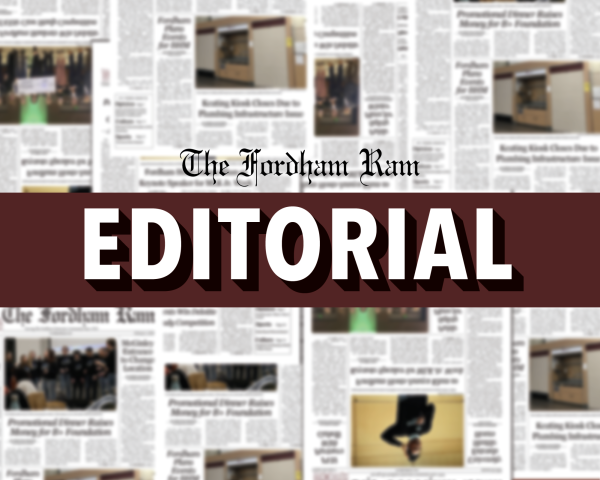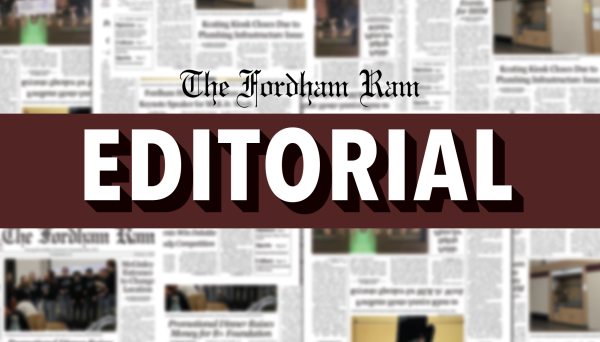Fordham Gates Divide the Bronx & Student Opinions
Fordham University, for its location and status, is frequently referred to as an “Oasis in the Bronx,” and perhaps the most important factor in this metaphor is the nearly 1.75 miles of gate that surrounds Rose Hill’s campus on all sides.
The gates play a vital role in the university’s relationship with its Bronx community. At a number of gate openings, only community members carrying active Fordham IDs are allowed past the iron bars, scanning their identification through installed security scanners. Each gate is overseen by security guards who are tasked with making sure that non-Fordham University members don’t make it through.
The university maintains strict vigilance, though exceptions are made for churchgoers, student families and friends of students. Some students have also mastered the art of sneaking their friends through, especially through the unmanned Walsh turnstile.
For years the gates have been a topic of discussion at Fordham, with some students and faculty members advocating that they be removed or opened to the public. The question at the heart of the gates’ existence is one that examines how exactly the university’s relationship with the Bronx community is affected by the barriers. The question is one without a solid, singular answer.
When the Ram interviewed students on campus about whether the gates should stay closed or be opened to allow non-university community members to access campus grounds, students expressed a variety of opinions and detailed numerous pros and cons.
Some students feel as though the barriers are protective and provide a feeling of reassurance and safety. They said that feelings of anxiety are often alleviated after entering the gates. Because of the university’s location in the largest city in the country, having a space solely for Fordham students can give those on-campus peace-of-mind, not having to worry about chaotic social uncertainties. Living in a city comes with certain, inherent dangers, but having the gates can allow students to let their guard down some while on campus.
In addition to the safety aspects of the gates, they also create a sense of community for students in the midst of the chaos of New York. Many students choose Fordham because they are able to have the experience of going to an urban school, along with the intimate feeling of a traditional college campus.
Other students disagreed, stating that the barriers’ greatest effects are in the disconnection and distanciation between Fordham University and the Bronx neighborhood its located in.
The barriers create a closed, locked environment that feels almost disruptive to Bronx infrastructure. Though the city has developed around it, it can still be difficult to get from the corner of Southern Boulevard and Fordham Road to the opposite corner of Webster Avenue and 198th Street when you have to walk around the gated perimeter instead of through the shortest path, which goes through campus.
As a result, there is developed opposition to the Bronx community from within Fordham’s campus. More than literal physical barriers, the gates act as a metaphysical barrier that makes it difficult for students to feel fully integrated into the community around campus. A heightened sense of fear and nervousness about what could be beyond the gates is manufactured by structures of concrete, stone and iron. The situation doesn’t integrate students into the community. In fact, the opposite effect is created: “us vs. them” prevails.
After posting the video to the Ram’s YouTube and Instagram accounts, parents, alumni and other non-student community members also voiced their opinions through comments. For these people, the gates represent a positive force and they are in favor of Fordham remaining a gated university.
“Of course they should [keep the gates closed] … that neighborhood is a war zone. Open the campus, I pull my kid right out,” commented one parent.
The conversation among those interacting with the video allowed those of all opinions to respond.
“Who’s in danger?” replied a recent alum, their comment suggesting that the perceived threat of danger off-campus is falsified.
As mentioned before, deciding whether or not the gates should stay closed or be opened to the public is not a decision that can easily be made by one group of people. Interactions with the Ram’s video proved that both students, past and present, and parents have strongly differing views, not to mention the views and decisions made by actual university administrators.
In these conversations, another important, affected group is left out: What do Bronx residents think?
In a previous editorial, the Ram discussed the impact that Fordham students have on the Bronx, specifically the Belmont neighborhood. It’s clear that there is a physical, traceable impact that these students have on the development of the neighborhood and, by extension, the non-university residents that occupy it. Believing that these residents don’t have an important opinion on the university’s gates rejects their autonomy.
The Fordham Ram believes that the next step in the gate discourse is to have an inclusive conversation instead of jumping to an immediate answer. There is no simple solution to the problem, but the journey to find one should involve everyone who is affected, not just a privileged subset.












































































































































































































Erica • Oct 12, 2022 at 8:15 pm
“That neighborhood is a war zone” my ass. Walked home to my off-campus apartment at midnight for an entire summer and the most sus thing I saw was a guy holding a chihuahua like a purse